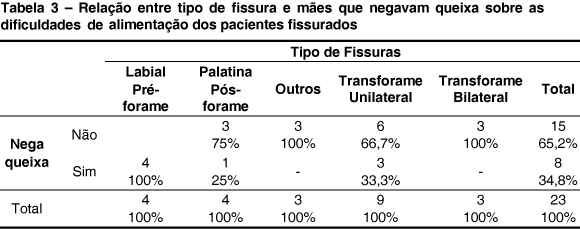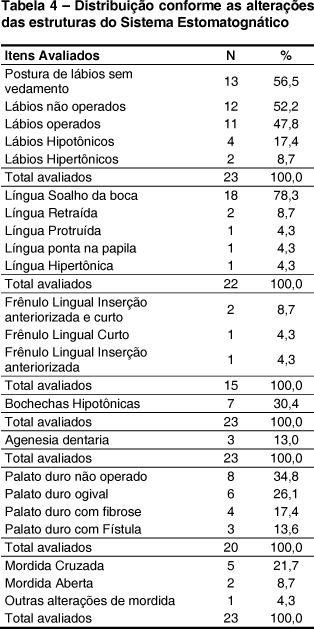PURPOSE: to evaluate feeding in children with cleft lip and/or palate and describe their characteristics; to check the sort of feeding and their feeding difficulties. METHODS: we used a quantitative, cross-sectional, observational and descriptive study. Twenty-three cleft patients from 0 to 9-year old were evaluated in this study. Interviews were accomplished with the sponsors. We carried out a descriptive statistical analysis of the data obtained in the evaluation, as well as the theoretical analysis. RESULTS: the most found sort of cleft was the Unilateral Transforame Cleft. From the 23 children, two (8.75%) were exclusively breastfeeding. Major feeding difficulties were: six (26.1%) difficulty to suck, 10 (43.5%) choking, four (17.4%) difficulty to swallow, three (13.0%) difficulty to chew and 12 (52.2%) had nasal reflux. The more frequent alterations of the Stomatognathic System were found in the swallowing important lingual interference and mastication of chewing type. CONCLUSION: the transforame cleft, even being more complex, did not exclude the exclusive breastfeeding; the sort of feeding related with the patients' age, presents itself in an appropriate way; part of the patients still use the bottle with a common nipple, constituting a harmful habit. Major difficulties in feeding reported by mothers were choking, nasal reflux and sucking difficulty. The children that did not have complaints of feeding difficulty were the ones with incisive preforame cleft.
Cleft Lip; Cleft Palate; Feeding Methods; Eating Disorders







